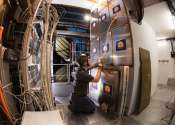Treasures beneath the ocean floor? Seawater plays role in gold formation
Understanding how gold forms is crucial for knowing where to find it and how to extract it sustainably. McGill researchers have answered a long-standing question in geology that could lead to new ore discoveries.









